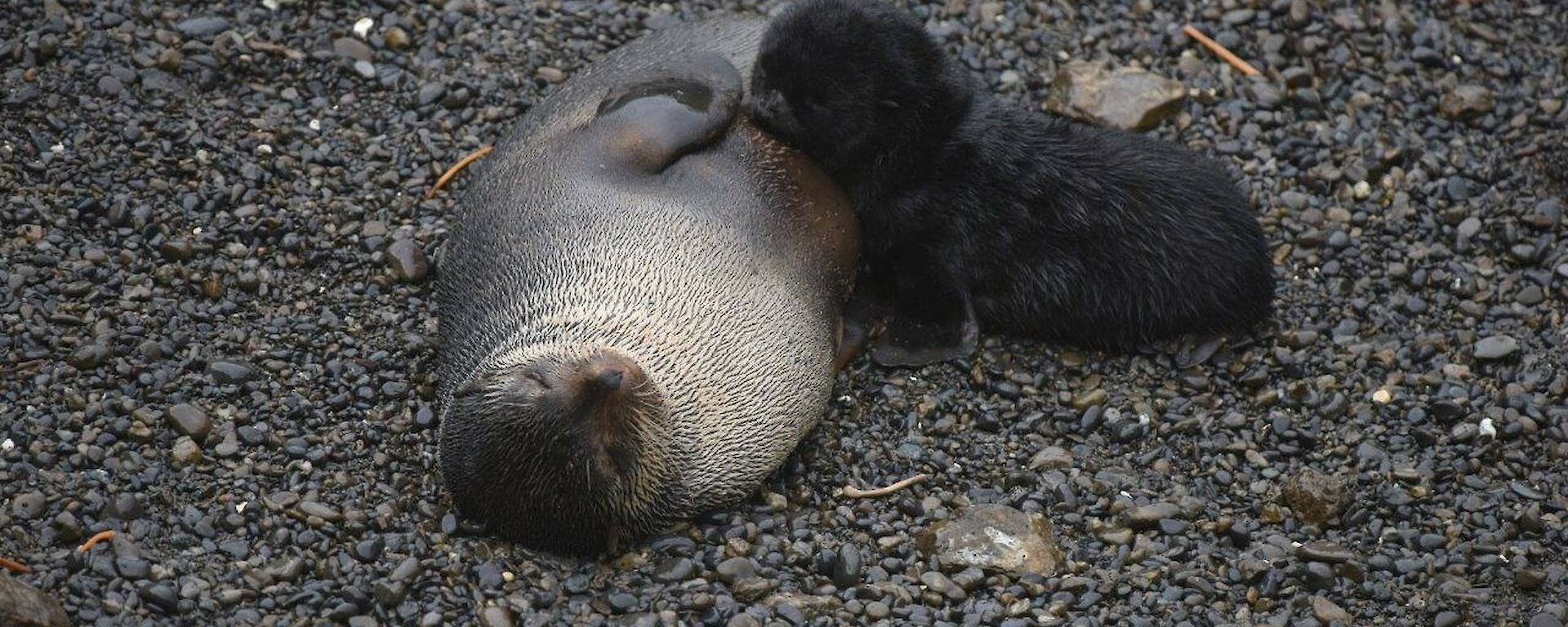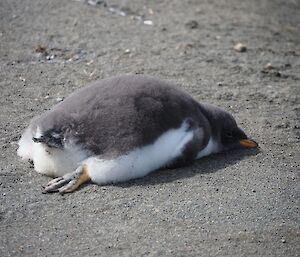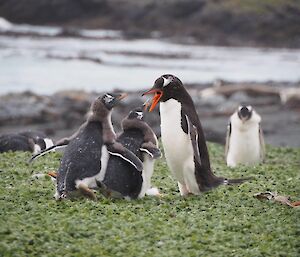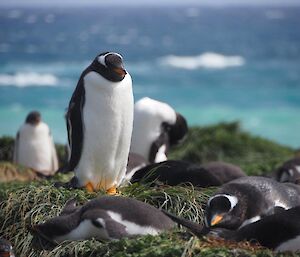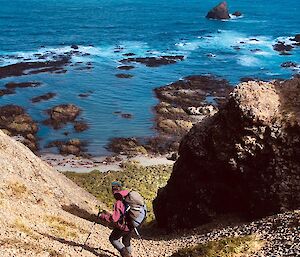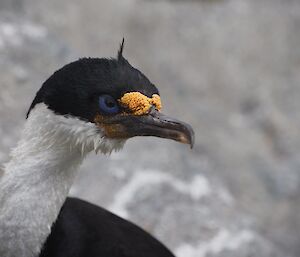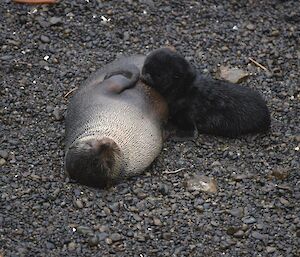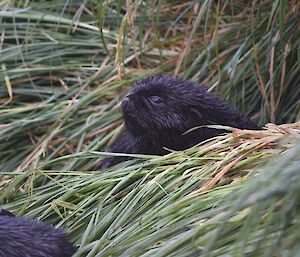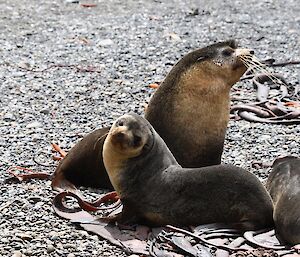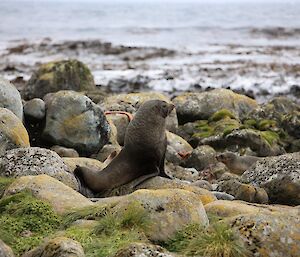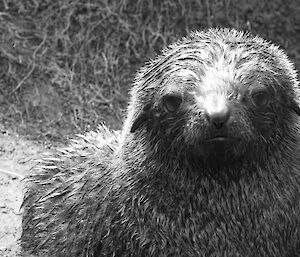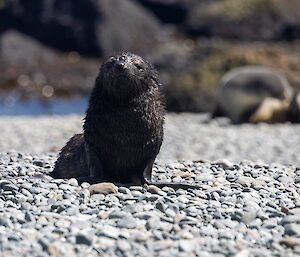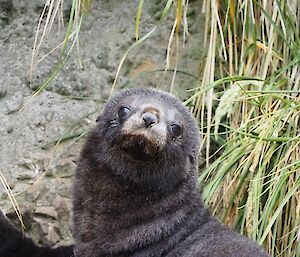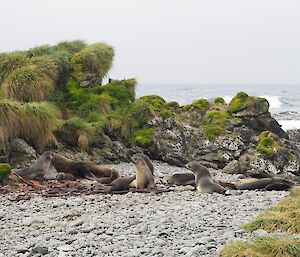On Macquarie Island it seems like the ranger team is always out counting something, especially over the summer months when the island is teaming with seals, penguins and seabirds. We have four seal species and numerous seabird species that are currently known to breed on the island. Last month the rangers completed whole island censuses of gentoo penguin chicks and the endemic Macquarie Island cormorant, however last week we were counting fur seal pups. As we are a team of two this year, we sometimes ask expeditioners to assist us and this time we had plenty of very keen volunteers for the task!
Fur seal populations were decimated on Macquarie Island due to uncontrolled sealing in the 19th century. Reliable records of species present and numbers taken are not available, and its unknown which species originally inhabited the island. Fur seals were first recorded breeding again on Macquarie Island in 1955, and populations have been slowly increasing since then. Sub-Antarctic and Antarctic fur seals breed on the island, with long-nosed fur seals also present. Threats to fur seals on Macquarie Island include predation by orca, New Zealand (Hookers) sea lions taking pups and juveniles, and entanglement in discarded fishing nets and lines.
Antarctic and sub-Antarctic fur seal pups are born from mid-November to late December and are weaned by April. The majority of pupping is on the beaches around North Head and in recent years also near Handspike Point. Pups are also occasionally observed at other locations around the island. Pups are covered in dark brown to black fur, and weigh between 3-7kg when born.
This year pup counts are being conducted over a two-week period during peak pupping from the 27th of December, with three counts undertaken at specific sites. An expeditioner was paired with one the rangers for each count under a specific access authority. Pups are viewed from a distance, sometimes using binoculars, however some pups are also hidden in the tussocks at the back of the beach and careful searching is required to count these pups. Dominant bull males are protective of their territories and will chase off other males and discourage females from leaving their territory. The males also give off a strong musky odour that can be smelt from a distance and so are easily avoided during pup searching. This smell, along with the antics of the males and the sheer cuteness of the fur seal pups makes for a memorable experience!
Populations of marine vertebrates are threatened worldwide by various factors including pollution, human induced climate change and fisheries activities. There are various long-term monitoring programs for marine vertebrate species breeding on the island. Long term monitoring, combined with detailed demographic monitoring for some species and other external data (environmental and fisheries), assist in identifying conservation and management actions.
Assistance from AAD expeditioners is always greatly appreciated and helps us continue with this important work.
From Ranger Ro and your friendly Macca neighbourhood crew
AKA Ranger in Charge, Rowena Hannaford
Tasmania Parks and Wildlife Service

